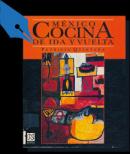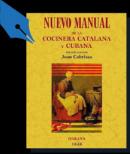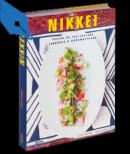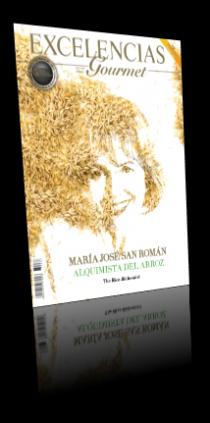Apetito Literario. Gourmet 67
No existe cultura alguna que sea 100% pura. Todas, de algún modo, han bebido de otras para concebir su identidad. Este hecho se extiende a todas las esferas de la sociedad, entre las que se incluye, por supuesto, la gastronomía. El “descubrimiento” de América fue un acontecimiento importante en ese sentido desde el punto de vista culinario. Ingredientes como el arroz, el azúcar, la cebolla y el trigo se incorporaron a la dieta del Nuevo Mundo, y otros como la papa y el tomate fueron exportados a Europa. Como resultado de ese ir y venir de alimentos, surgieron maravillosas recetas.
México, cocina de ida y vuelta
Autora: Patricia Quintana
En más de una treintena de recetas, esta publicación muestra una interesante fusión entre la comida mexicana y otras del mundo. Entre los países referidos se encuentran Italia, España, Francia e incluso China.
La chef mexicana Patricia Quintana tiene en su haber más de 25 publicaciones referidas a la cocina del país azteca, la mayoría consideradas Patrimonio Cultural de esa nación. Fue nombrada Embajadora Culinaria por la Secretaría de Turismo y la Asociación de Restaurantes de México.
Mexico: Round-Trip Cooking
Autor: Patricia Quintana
In more than thirty recipes, this publication shows an interesting fusion between Mexican food and other foods from around the world. Among the countries included in this volume, Italy, Spain, France and even China are some of the standouts.
Mexican chef Patricia Quintana has over 25 publications under her apron, all related to the Aztec country’s cuisine, with most of them penciled in as cultural heritage of the nation. She was named Culinary Ambassador by the Secretariat of Tourism and the Restaurant Association of Mexico.
Nuevo manual de la cocinera catalana y cubana
Autor: Juan Cabrisas
La primera edición de este libro tuvo lugar en 1858. Sus páginas recogen recetas originalmente cubanas y catalanas, así como otras, producto del acercamiento entre España y Cuba. También indica las normas de limpieza en una cocina y los diferentes utensilios a emplear en la elaboración de alimentos, a la usanza del siglo XIX en esas dos regiones.
Juan Cabrisas fue un cocinero catalán que trabajaba en la fonda habanera Los Tres Reyes en los años 50 del siglo XIX. Solo se conoce de él la publicación del Nuevo manual…
New Handbook of Catalonian and Cuban Cuisines
Autor: Juan Cabrisas
The first edition of this book took place in 1858. Its pages cull original Cuban and Catalonian recipes, as well as other products that depict the rapprochement between Spain and Cuba. The volume indicates the standards of cleanliness in a kitchen and the different utensils to be used in the preparation of food, in the style of the 19th century that prevailed in those two regions.
Juan Cabrisas was a Catalonian chef who worked in the Los Tres Reyes Inn in Havana back in the 1850s. Only the publication of the new handbook is known so far.
Nikkei: Fusión de las cocinas japonesa y sudamericana
Autor: Luiz Hara
La diáspora japonesa se ha visto en la necesidad de amoldar su culinaria a circunstancias diferentes e incorporar a sus recetarios nuevos ingredientes. Esa conciliación se conoce como cocina nikkei. Este texto se refiere a dicha tipología gastronómica e incluye innovadoras recetas niponas mezcladas con ingredientes de
la gastronomía tanto peruana como brasileña.
El chef británico y escritor de comidas y viajes, Luiz Hara, es graduado de Le Cordon Bleu, red líder mundial de escuelas de alta cocina. Además, es fundador de The London Foodie, uno de los mejores 10 blogs de gastronomía y viajes en Reino Unido.
Nikkei: Fusion of Japanese and South American Cookings
Autor: Luiz Hara
The Japanese Diaspora has been bound to adapt its cuisine to different circumstances and incorporate new ingredients. That conciliation is known as Nikkei cuisine. This text refers to the aforesaid typology and includes innovative Japanese recipes mixed with ingredients from Peruvian and Brazilian food.
The British chef, food writer and travel Luiz Hara is a graduate of Le Cordon Bleu, the world’s leading network of haute cuisine schools. In addition, he is a founder of The London Foodie, one of the top-10 gastronomy and travel blogs in the United Kingdom.
Literary Appetite
There is no culture that is 100% pure. All, somehow , have sipped in from others to whip his identity into shape. The “discovery” of America was an important event in that sense from the culinary point of view. Ingredients such as rice, sugar, onion and wheat were added to the New World diet, while others, such as potatoes and tomatoes, were exported to Europe. As a result of that coming and going of food, wonderful recipes popped up.



















































































